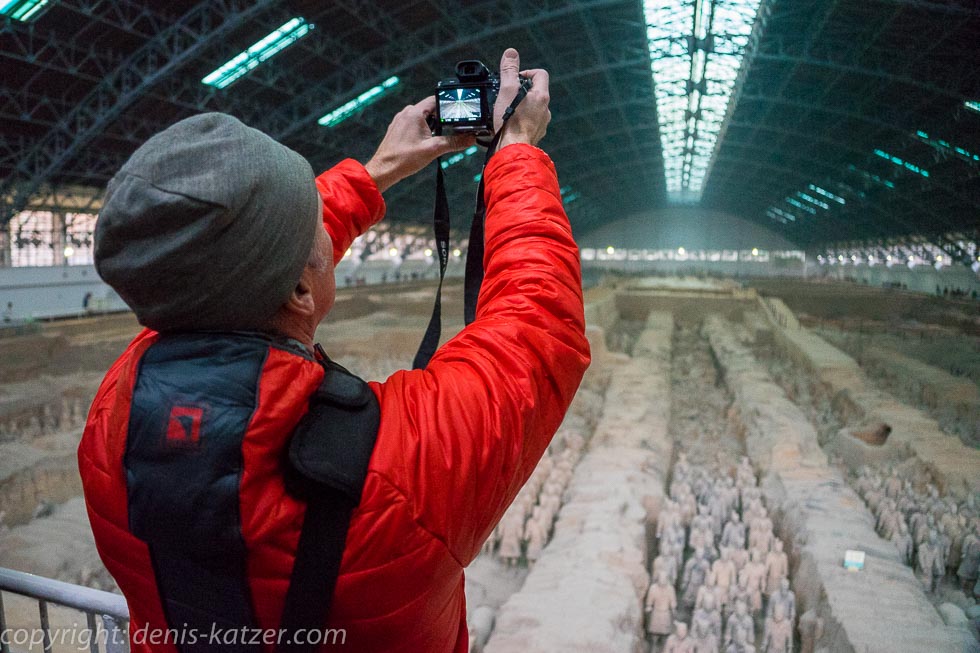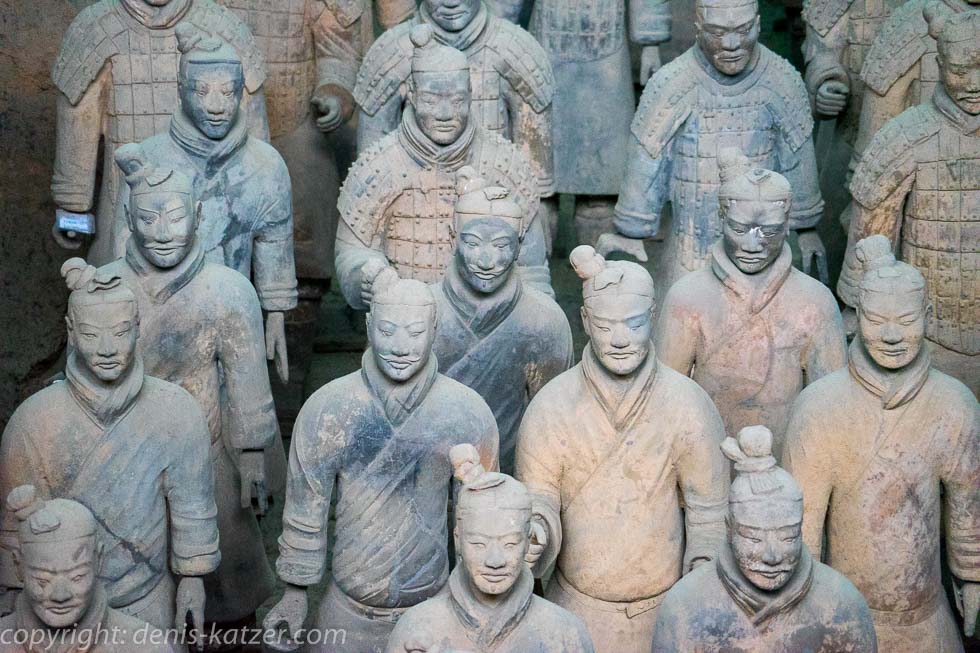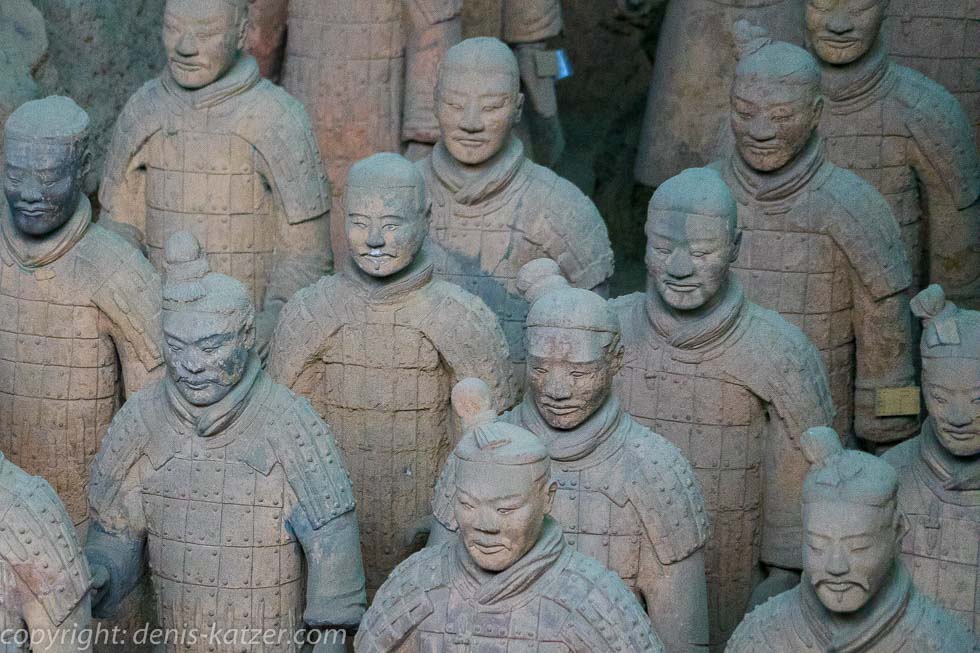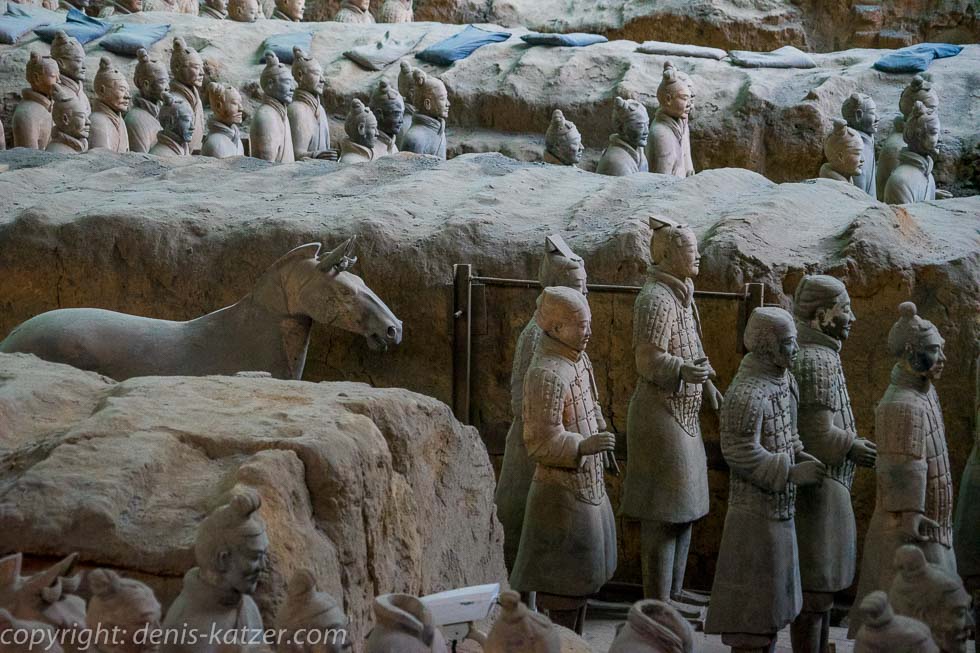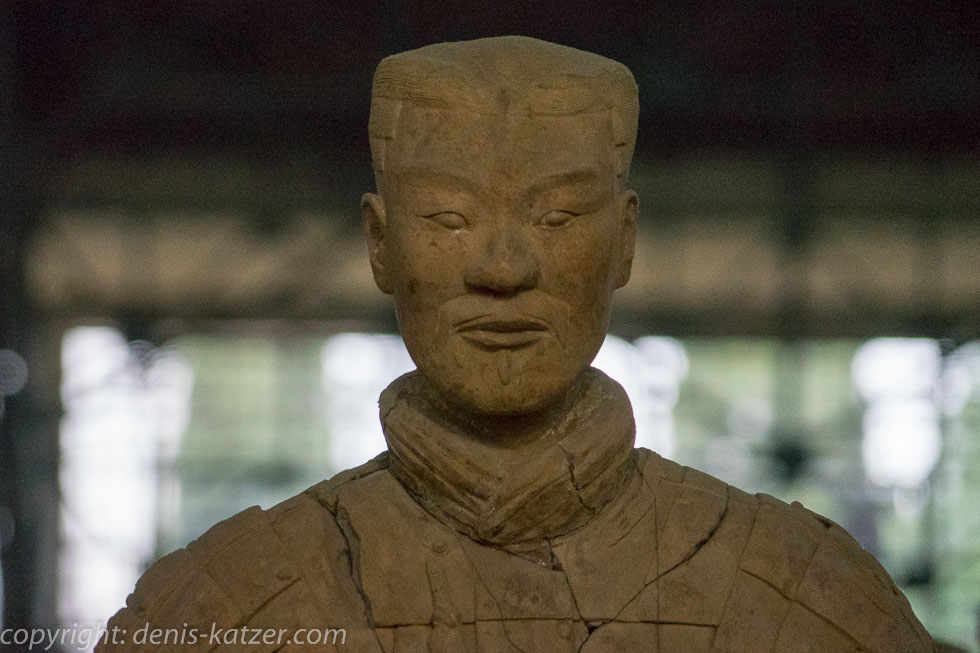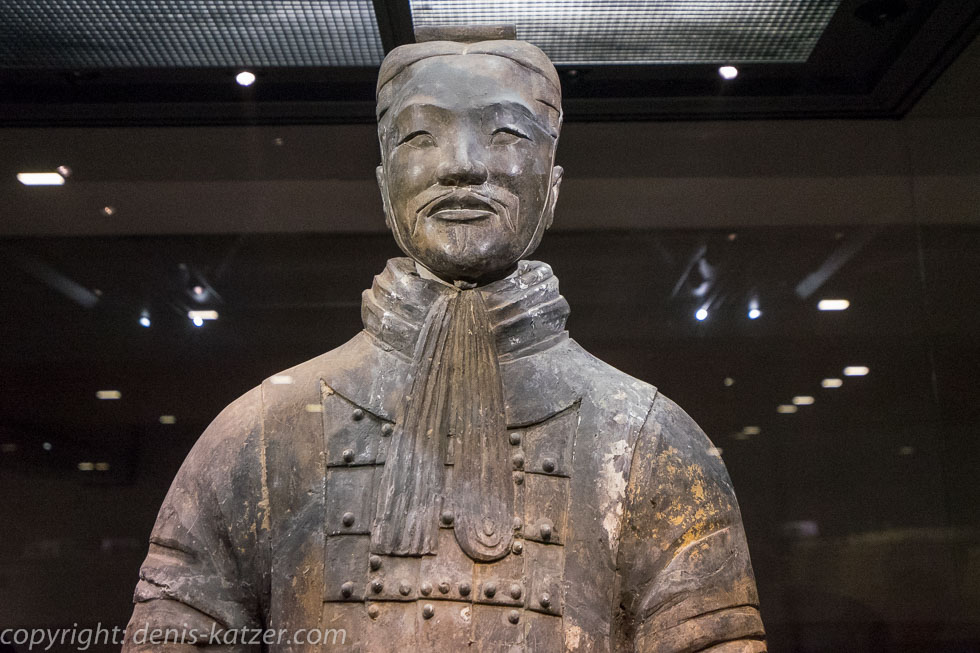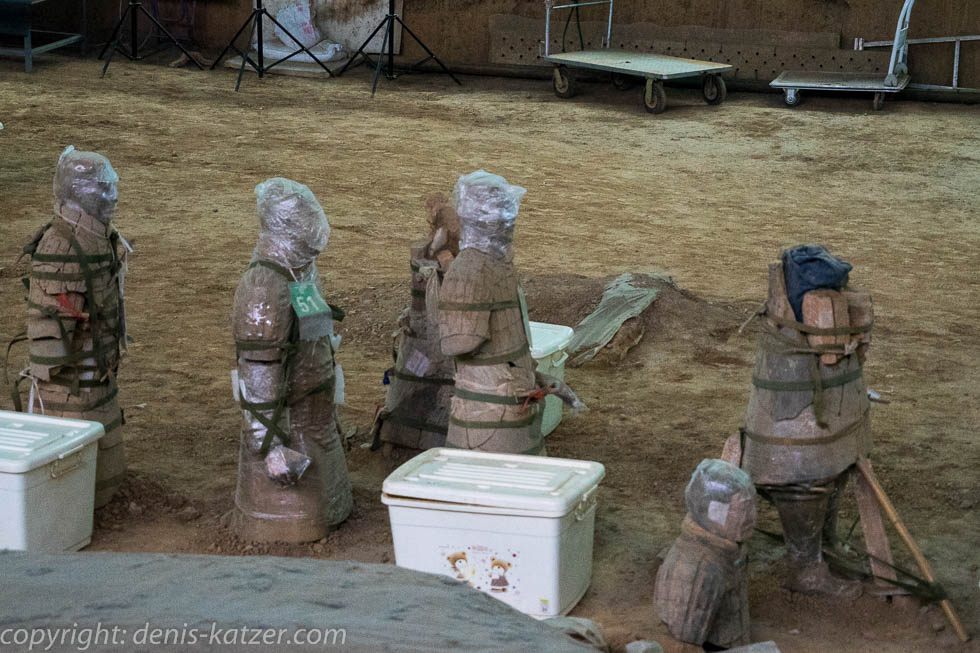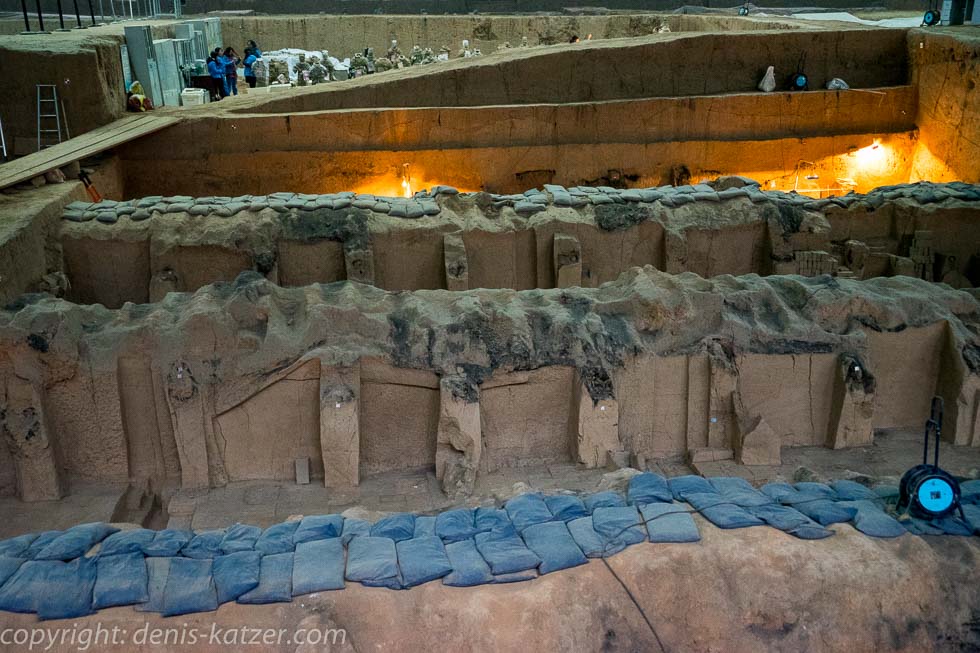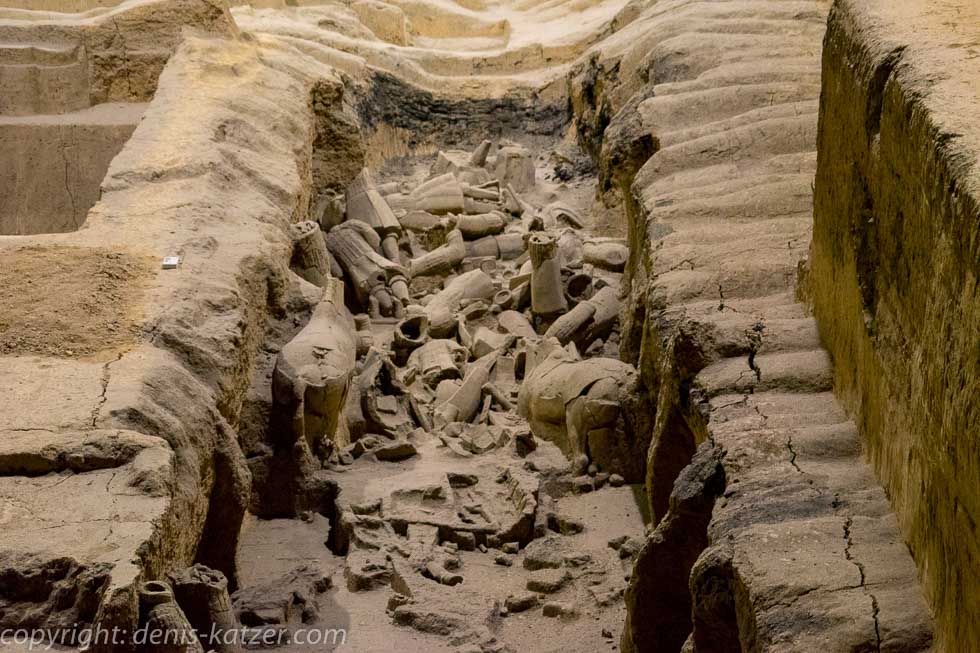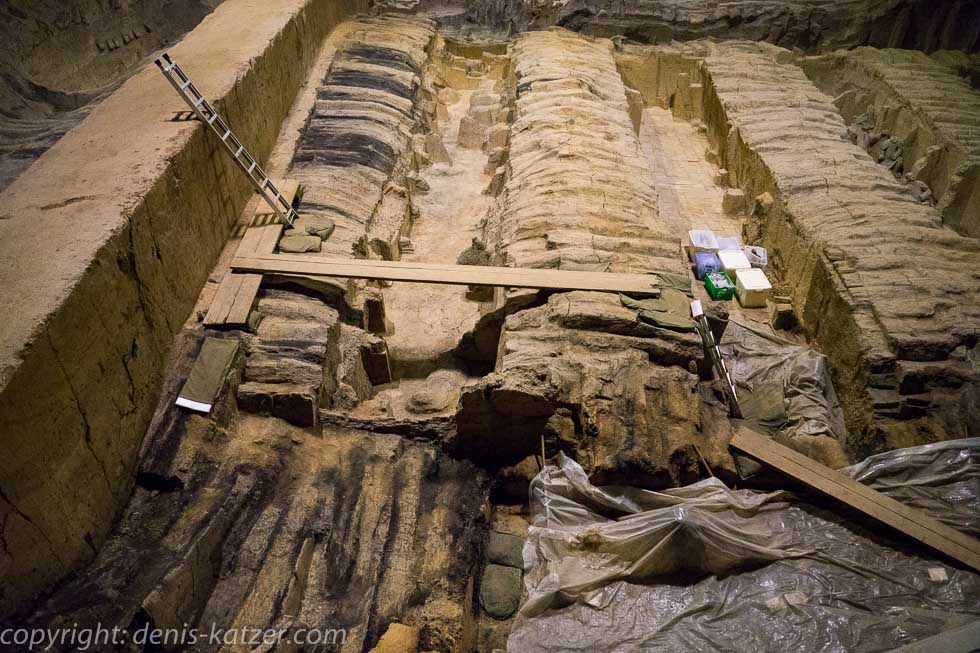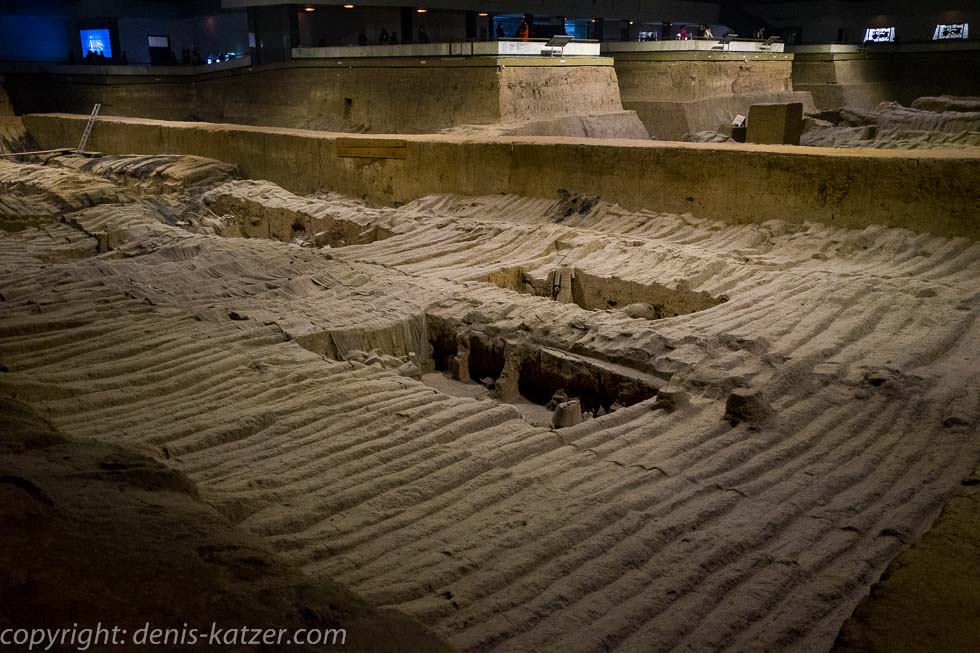
Terracotta army
N 34°15'16.4'' E 108°56'44.1''
Date:
23.12.2015
Day: 178
Country:
China
Province:
Shaanxi
Location:
Xi’an
Latitude N:
34°15’16.4”
Longitude E:
108°56’44.1”
Total kilometers:
11,431 km
Total altitude meters:
13.679 m
Sunrise:
07:47 am
Sunset:
5:39 pm
Temperature day max:
5°C
(Photos of the diary entry can be found at the end of the text).
We are on a bus to the Terracotta Army, which is about 36 km north-east of Xi’an, and are excited as these excavations are one of the absolute highlights in China. “Do you also want to visit the mausoleum?” a young man asks us in English. “Yes,” I answer somewhat briefly, as I’m tired and don’t feel like having a long conversation. “My name is Chang,” he says, holding out his hand in greeting. We learn that Chang is a private teacher and has been traveling through China for four weeks. “But traveling for so long is very unusual for a Chinese person,” I wonder, whereupon Chang feels encouraged to start babbling like a waterfall, explaining how he is interested in the history of his country and how he is fulfilling a dream with the long break from work. At the terminus, the friendly Chang asks for directions to the mausoleum of the first emperor of China. With our self-appointed tour guide and translator, we now stroll to one of the largest tombs in the world. According to Chang, the eighth wonder of the world.
When we reach the mausoleum of Qín Shǐhuángdì, the first emperor of China, who also declared Xi’an his capital, there are relatively few visitors. “You’re lucky not to be here in summer or during one of our vacation days. There’s hardly a chance to see anything because of the tens of thousands of guests,” Chang explains, as if he has guessed my astonished look.
A few hundred meters further on, we stand in the main pit in front of a huge army of clay figures. The sight of them literally makes us salivate. “1,087 soldiers and horses have been uncovered and restored here,” explains Chang. “Impressive,” I say. “Absolutely,” says the archaeology enthusiast, who adds that there are an estimated 7,278 life-size foot and horse soldiers in the entire tomb complex. “The others will only be released once these have all been restored. The archaeologists are working piece by piece on the excavation, which will certainly take years.”
We stand there spellbound and inhale the sight of this mighty army. After we have had our fill, Chang leads us on through the covered hall, which is around 200 m long and 70 m wide. “In 1974, farmers tried to dig a well here because they urgently needed water for their dry fields. They came across a hard, burnt layer of earth purely by chance. When they dug further, they found pottery shards four meters below the surface, a brick-lined floor, a bronze crossbow mechanism and bronze arrows,” says Chang, who now feels like a lucky find.
We enthusiastically walk past a complete army of the time, whose soldiers were sculpted from yellow terracotta clay and no two are alike. Eyes, noses, ears, hair, beards and figure also differ. Even the ranks of the warriors can be recognized by the different uniforms. Over the millennia, many of the clay men have been crushed by the earth in the halls created for them or destroyed during excavation. Even now, during visiting hours, a whole host of restorers are working tirelessly to restore it.
“There must have been countless people who created all this?” I say, moved. “700,000 workers have probably toiled day and night for years, more or less for decades, to build the emperor’s tomb,” we hear. Chang explains that only a quarter of the entire complex has been uncovered to date. “The burial mound in the middle is still completely untouched. It must be a legendary burial chamber described by Sima Qian, a historian of the time,” enthuses Chang. “Are there any records of this?” I wonder. “Oh yes. Sima reports that thousands of gemstones and pearls were attached to the ceiling of the hall to symbolize the starry sky and that there is a picture of the country on the floor, on which rivers of mercury are constantly flowing through an automatic mechanism and all of China’s lakes can be seen. In the middle of the burial hall, where Qín Shǐhuángdì’s coffin is erected, there are corridors lined with clay animals and birds.” “Hmm, sounds almost like a fairy tale,” I say doubtfully. “But no. It’s definitely not a fairy tale. The grave does exist. We know that for a fact and the latest investigations using sonar and state-of-the-art computer technology have actually detected a high concentration of mercury in the mountain.” Under the spell of Chang’s stories, we visit the two other pits and the museum. We then travel back to Xi’an together by bus. “Thank you very much for the fantastic explanations,” we say. “It was also a great pleasure to be out and about with you. I was able to improve my rusty English a little and I wasn’t alone,” he says, waving and disappearing into the mass of people…
The live coverage is supported by the companies Gesat GmbH: www.gesat.com and roda computer GmbH www.roda-computer.com The satellite telephone Explorer 300 from Gesat and the rugged notebook Pegasus RP9 from Roda are the pillars of the transmission.
